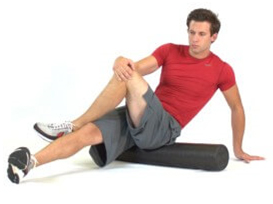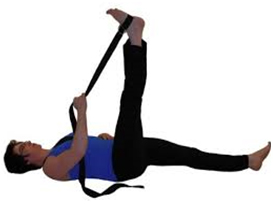Two Uncommon and Beneficial Forms of Stretching
By your Fitness Trainers at Century Fitness
– FOAM ROLLING –

Also known as myofascial release uses your body weight to apply pressure along your body to relieve muscle tension. This method allows you to stop at a particularly tight, or sore area, to apply more pressure and spend more time there. Foam Rolling can be used before a workout to decrease muscle tension and warm-up the area. After a workout, rolling helps in recovery by stretching the muscle in a “kneading” movement instead of pulling the muscles from their insertion point. This motion removes adhesions (muscular micro damage) that may occur from exercise or from daily life activities.
Foam Rolling is generally used on larger lower-body muscles such as; glutes, hamstrings, and quads. Rolling can be accomplished on some of the upper-body as well. Roll slowly, about an inch per second, for up to 10 rolls.
Benefits of Foam Rolling include:
- -reduces muscle tightness,
- -improves range of motion
- -less noticeable soreness
- -better recovery
- -promotes relaxation
- -increases circulation
– PNF STRETCHING –
(Proprioceptive Neuromuscular Facilitation)

For decades athletes have recognized the benefits of PNF Stretching to increase range of motion and prevent muscular injuries. Studies have proven range of motion in the targeted muscles increases substantially over other forms of stretching. The same studies also identify that this form of “contract and relax” stretching will decrease muscle performance if done prior to an activity in which maximal muscle effort is expected.
PNF Stretching has more steps to follow than a static held stretch – but it’s worth the effort!
- After you work-out is complete (in most cases), find an area suitable for stretching and have a long towel or a very firm strap that has very little or no elasticity.
- Choose the muscle(s) you would like to target for an increased range of motion and flexibility.
- Bring the muscle into the stretch but not beyond.
- Use your towel or strap and wrap it around your foot, limb, etc. – but don’t push yet.
- Wait until you feel the muscle start to relax then push against towel making an isometric contraction of the stretched muscle. Use an effort scale of about six to seven out of ten effort.
- Hold for approximately six seconds, release, relax, repeat two or three times.
You don’t need to be an athlete, trainer or physical therapist to benefit from PNF Stretching. However, to make this a safe and effective part of your routine, follow some of these basic guidelines:
- Do not use another person to resist against during the isometric contraction – so you stay in control.
- More effort in the form of pushing or attempting more range is often not helpful and can actually cause injury – remember it’s stretching!
Sources: Journal of Human KineticsJ 2012 Mar; 31: 105–113. Published online 2012 Apr 3. doi: 10.2478/v10078-012-0011-y
This article is intended to be provide knowledge of general health and fitness principles and is not medical advice. Please consult with a physician if you have questions.


Recent Comments